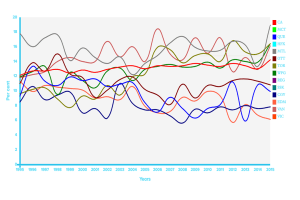15 November 2018: The UN Inter-Agency and Expert Group on SDG Indicators (IAEG-SDGs) has formally recognized the data gathering approach and methodology for SDG indicator 14.3 on marine acidity. The indicator will help track national efforts to tackle ocean acidification.
The Intergovernmental Oceanographic Commission of the UN Educational, Scientific and Cultural Organization (IOC-UNESCO) is the custodian agency for SDG indicator 14.3.1, which measures the average marine acidity (pH) measured at an agreed suite of representative sampling stations. IOC-UNESCO developed the global framework for measuring and collecting data on marine pH with the support of the ocean acidification scientific community, particularly the Global Ocean Acidification Observing Network (GOA-ON). The methodology provides guidance to countries and scientists about how to measure pH and report on the measurements.
A Tier II indicator is classified as conceptually clear, but countries do not regularly produce data on the indicator.
At the 51st IOC Executive Council meeting in July 2018, the IAEG-SDGs formally accepted the indicator as a Tier II indicator. This approval conveys international consensus that the methodology can be used to collect data and report on progress on marine acidity.
The IAEG-SDGs is the UN body charged with developing the indicator framework to measure progress on SDG implementation. The global SDG indicator framework is classified using three tiers, based on the methodological development and availability of data at the global level. A Tier II indicator is classified as conceptually clear, with an internationally established methodology and available standards, but countries do not regularly produce data on the indicator. In contrast, for a Tier I indicator, at least 50 percent of countries produce data on the indicator where it is relevant. [UNESCO Press Release] [IAEG-SDGs Website]

